This post may contain affiliate links which means I may receive a commission for purchases made through links. I only recommend products that I have personally used or curated specifically after reviewing and ensuring its quality! Learn more on my Private Policy page.
Storing Fruits and Vegetables – Introductions
In this blog post, we provide answers to some key questions (FAQs) that we often receive and have gathered from various sources. It is our hope that by responding to these questions it will provide you a quick reference point to address any pain points regarding processing, storing and preserving fruits and vegetables.
As we navigate through the FAQs we also provide recommended some of the best tools and small appliances available to help you craft solutions for your everyday storage needs.
This article has three sections – In the first section we briefly explore the various approaches, methods, and tools for processing and preparation of fruits and vegetables. In section two we expand the discussion to answer questions related to storage in the refrigerator, and in section three we explore storage solutions available for fruits and vegetables.
To learn more about other strategies for keeping fruits and veggies fresh please see our recent blog post by clicking the green bar below.
Processing and Preparation of Fruits and Vegetables
1. How to Process Fruits and Vegetables For Use?
Fruits and veggies are versatile and can be incorporated into diets in numerous ways. Whether you’re looking for a refreshing drink, a hearty meal, or a quick snack. Fruits and veggies can be prepared in myriad of ways based on ones culture, living and health conditions, or preferences. Our aim in this section is to briefly explore the various ways humans process and fruits and vegetables and the typical methods or equipment used in processing.
Juicers and De-Juicing
The simplest way to enjoy fruits and veggies is to do so when they are fresh. Cleaning them thoroughly ensures they’re safe to consume. Crisp bell peppers, juicy oranges, or crunchy carrots can be relished as they are or added to salads.
Extracting juice from fruits and veggies provides a nutrient-dense drink. By using a juicer machine, you can make combinations like apple-carrot-ginger or kale-cucumber-lime. De-juicing, on the other hand, involves separating the juice from the pulp.
The leftover pulp can be added to baked goods, composted, or used in cooking for added fiber. Juicers are useful in preparing fruits and veggies from the raw state thus preserving nutrients if consumed within a couple hours of preparation or preserved such that the nutrient quality is maintained.
Some sensitive vitamins may be oxidized quickly after preparation. Below please find top performing brands.
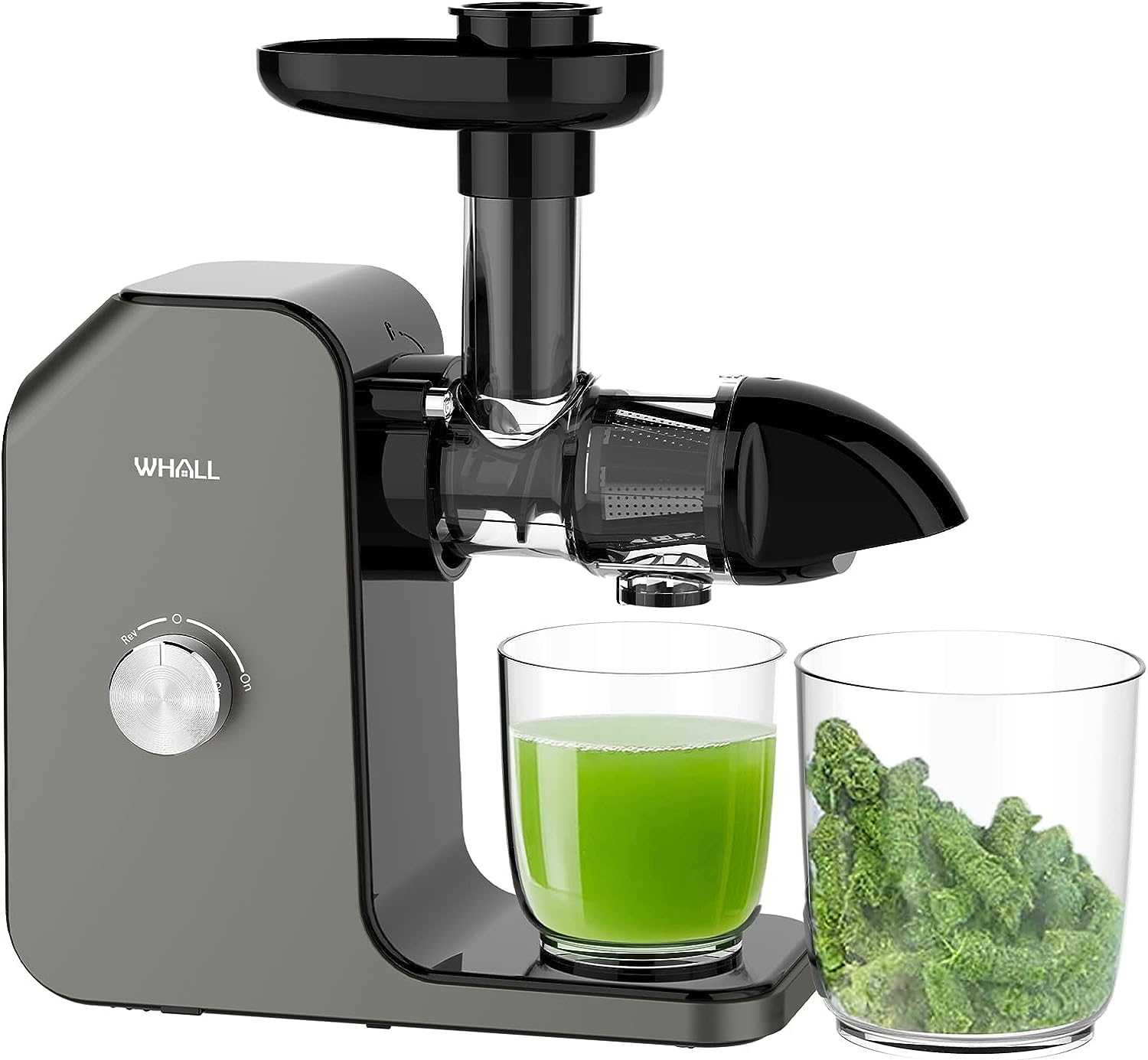


Steaming
Steaming retains most of the nutrients of vegetables and is alternate to broiling immersed in water where the nutrients may be lost. There are many variations of food steamers on the market some with see through covers whilst others are stainless steel with see through windows.
In general vegetables like broccoli, asparagus, and green beans are often steamed. There are also folding basket steamer inserts for traditional kitchen pots. Steaming is preferable to boiling as it retains a higher percentage of heat sensitive nutrients. Below please find top performing brands.

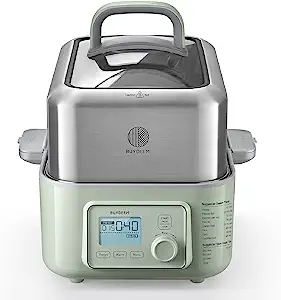

Blanching and Canning
Blanching is a processing process where fruits and vegetables are first heat treated with steam or in hot water and then immersed in cold or ice water for a short period. This halts enzymatic reactions which would typically caused spoilage. Blanching helps preserves color, flavor, texture, and nutrient content. Typical equipment used in blanching includes – pot for boiling water, a steamer, or a blancher, and a large bowl for an ice water bath. This process maintains most water-soluble vitamins if precise timing is followed to avoid overcooking. This technique is typically used as a precursor to canning/bottling or freezing.


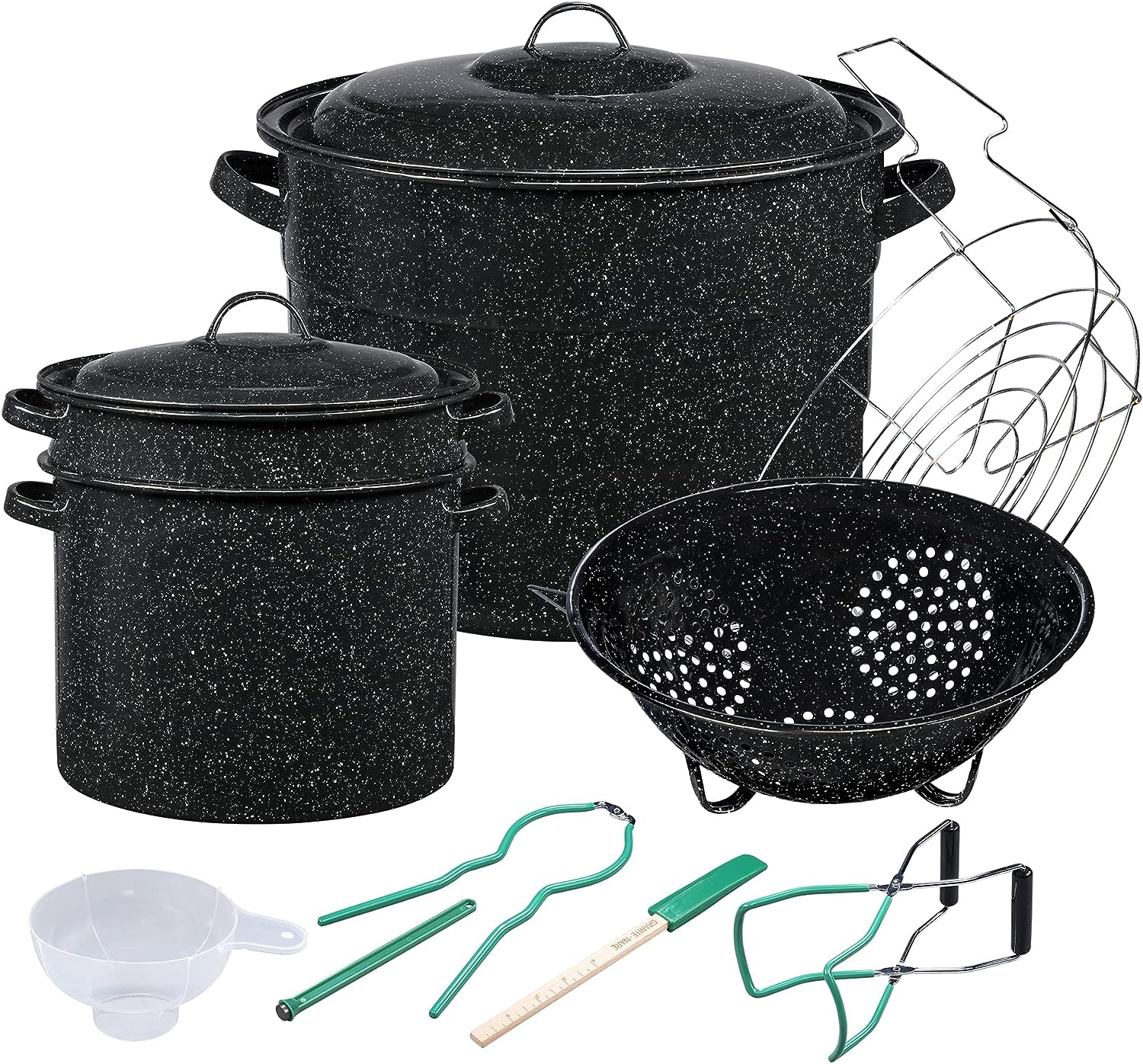
Boiling
Ideal for harder vegetables like potatoes and beets, boiling softens them for further use in recipes. However, some nutrients may leach into the water, so using the water in soups or stews is a good idea. Normal kitchen stock pots or steamers can be used to boil potatoes and beets as well. There are many pot brands on the market, below please find a top rated/ performing brand.


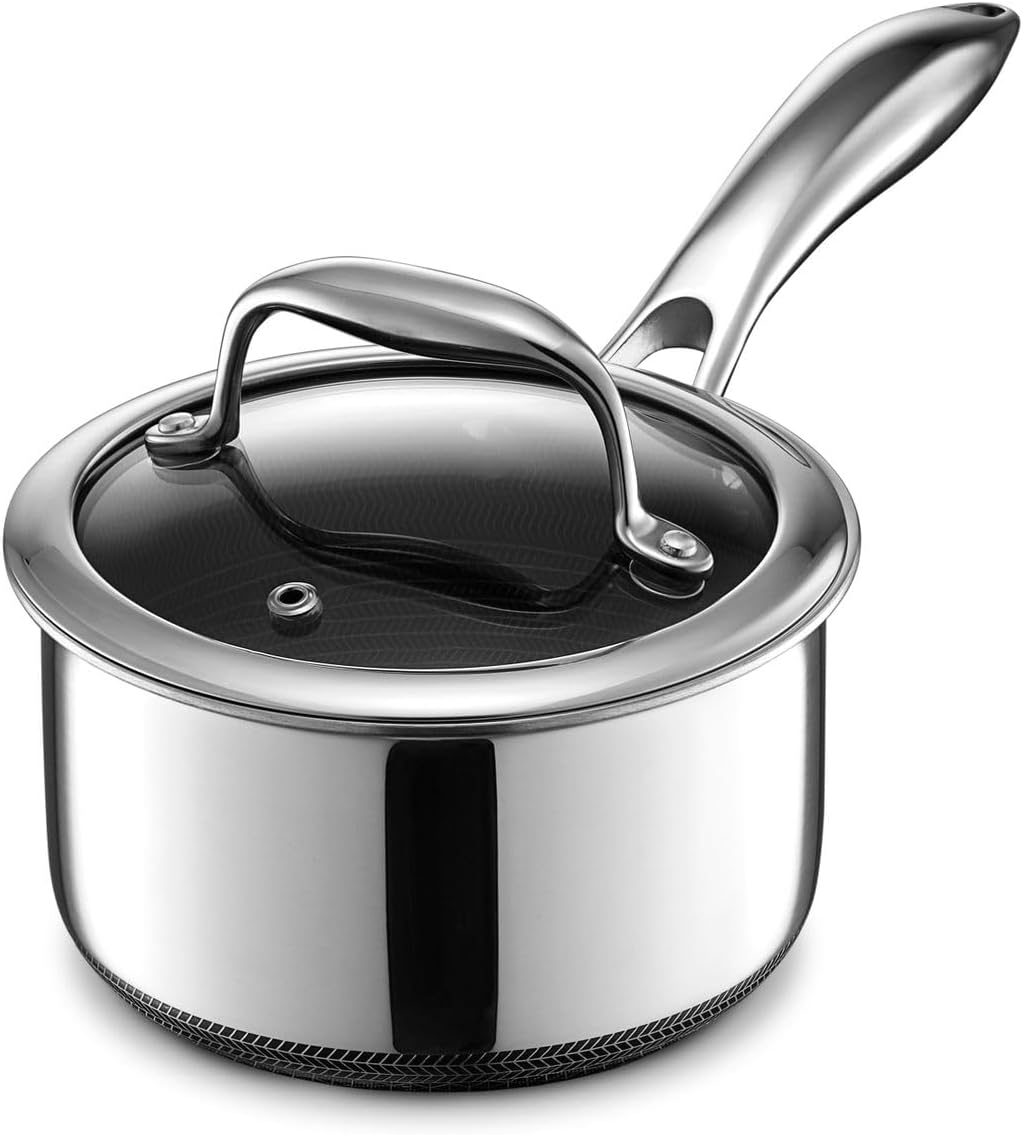
Grilling
Grilled fruits and vegetables have a unique smoky flavor. Zucchini, bell peppers, onions, and even fruits like pineapple and peaches are ideal for grilling on the BBQ. Grilling baskets are excellent for that purpose. High temperatures may reduce some nutrients and charring can form compounds that may be harmful but enhances flavor. In the winter months outdoor grilling is usually not possible and so an indoor grill can be very useful.
Below please find top performing brands of baskets and indoor grills.



Roasting
Roasting vegetables caramelizes the natural sugars in fruits and vegetables, enhancing their taste. Vegetables like carrots, potatoes, and brussels sprouts can be roasted. Similarly, fruits like apples and pears taste delightful when roasted. Below please find top performing brands.



Blending
For smoothies, soups, or sauces, blending fruits and vegetables is ideal for consumption especially when combined with protein supplements. Bananas, spinach, and almond milk make for a refreshing smoothie or blend tomatoes and basil for a simple soup. Blending retains most of the fiber content, unlike juicing, and as a result preserves the majority of nutrients.
However, it adds air into the mix leading to nutrient loss through oxidation – in particular vitamin C and other nutrients prone to oxidations. Below please find top performing brands.



Fermenting
Vegetables can be fermented to increase their life and nutritional value and has some probiotic benefits however some heat-sensitive nutrients may be adversely affected or altered by acidic condition. Sauerkraut (fermented cabbage) and kimchi (Korean fermented vegetables) are popular examples. Fermentation introduces beneficial bacteria, which can aid in digestion.
Various types of fermentation kits are available commercially. Below please find top performing brands.

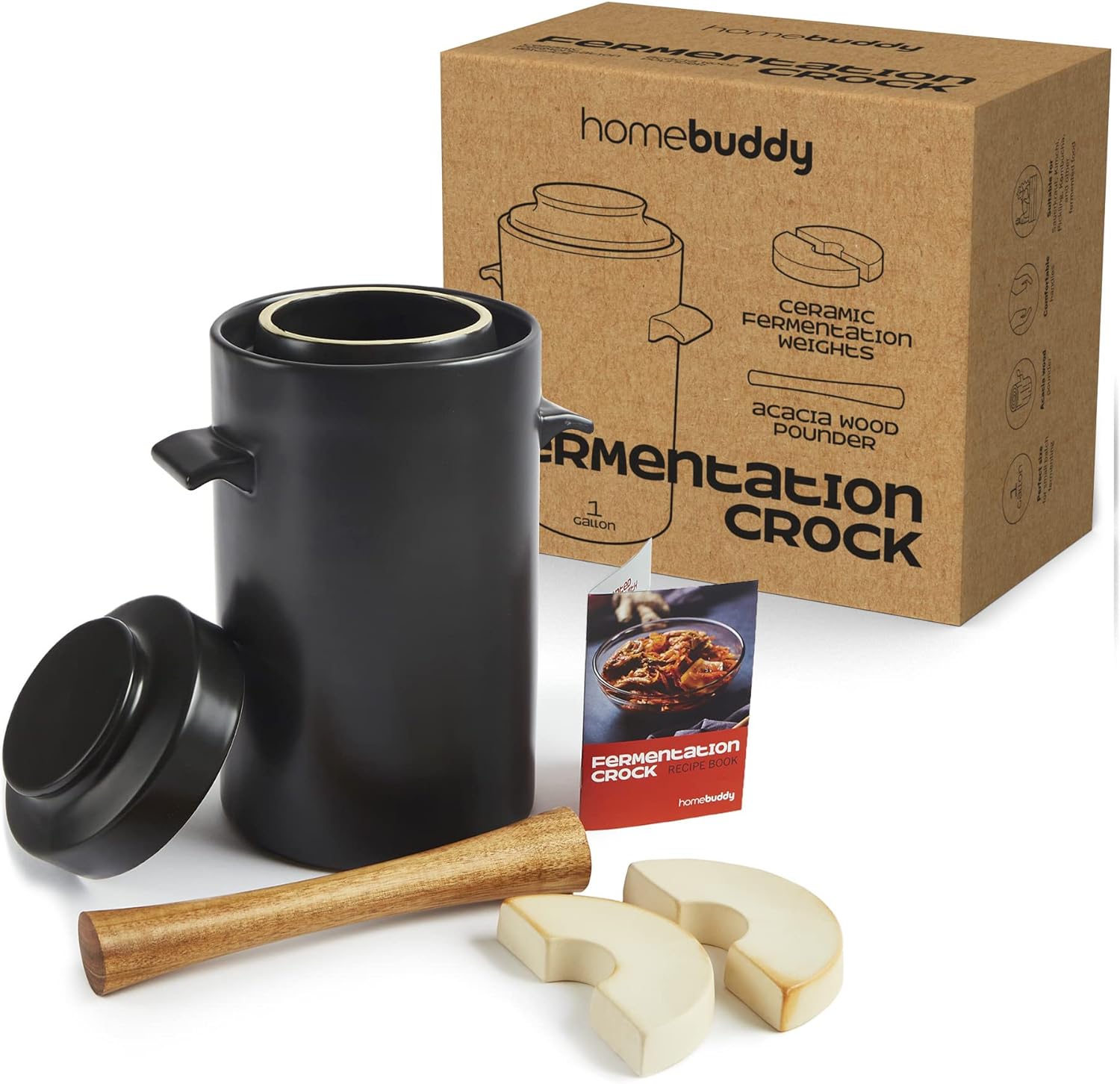

Freezing
To extend the life of fruits and veggies, freezing is effective. Before freezing, blanching vegetables helps retain their color and nutrients. Fruits like berries and mangoes can be frozen directly using freezer bags or containers for future use in desserts or smoothies. Most nutrients are reserved with freezing. Below please find top performing brands.
Dehydration or Drying
Drying or dehydrating fruits and veggies concentrates their flavors and makes them long-lasting. The main goal is to remove or reduce the moisture content such that the fruit or vegetable is preserved for longer due to do reduced enzymatic activity.
Dehydrators can be used to dry tomatoes, raisins (dried grapes), and figs and are popularly consumed. Dehydration retains most nutrients except for vitamin C which mostly lost. Dehydrators are used for that purpose. Below please find top performing brands.



In this section we will explore frequently asked questions (FAQs) related to the storage of fruits and vegetables in the refrigerator. To learn more about other strategies for keeping fruits and veggies fresh see our recent blog post by clicking the green bar below.
Fruits and Vegetables Storage in Refrigerators
1. How to Properly Refrigerate Fruits and Vegetables?
Refrigeration is one of the most effective methods to slow down ripening and preserve the freshness of the produce. For most fresh vegetables, they can be stored in the refrigerator’s crisper draws.
However, some vegetables, like bell peppers and cucumbers, may fare better at slightly warmer temperatures, so consider placing them in the main part of the refrigerator. Keep vegetables in a dry environment and separated away from excess moisture to prevent moisture-related spoilage.
To maintain the freshness of leafy greens, remove any damaged or wilted leaves before storing them.
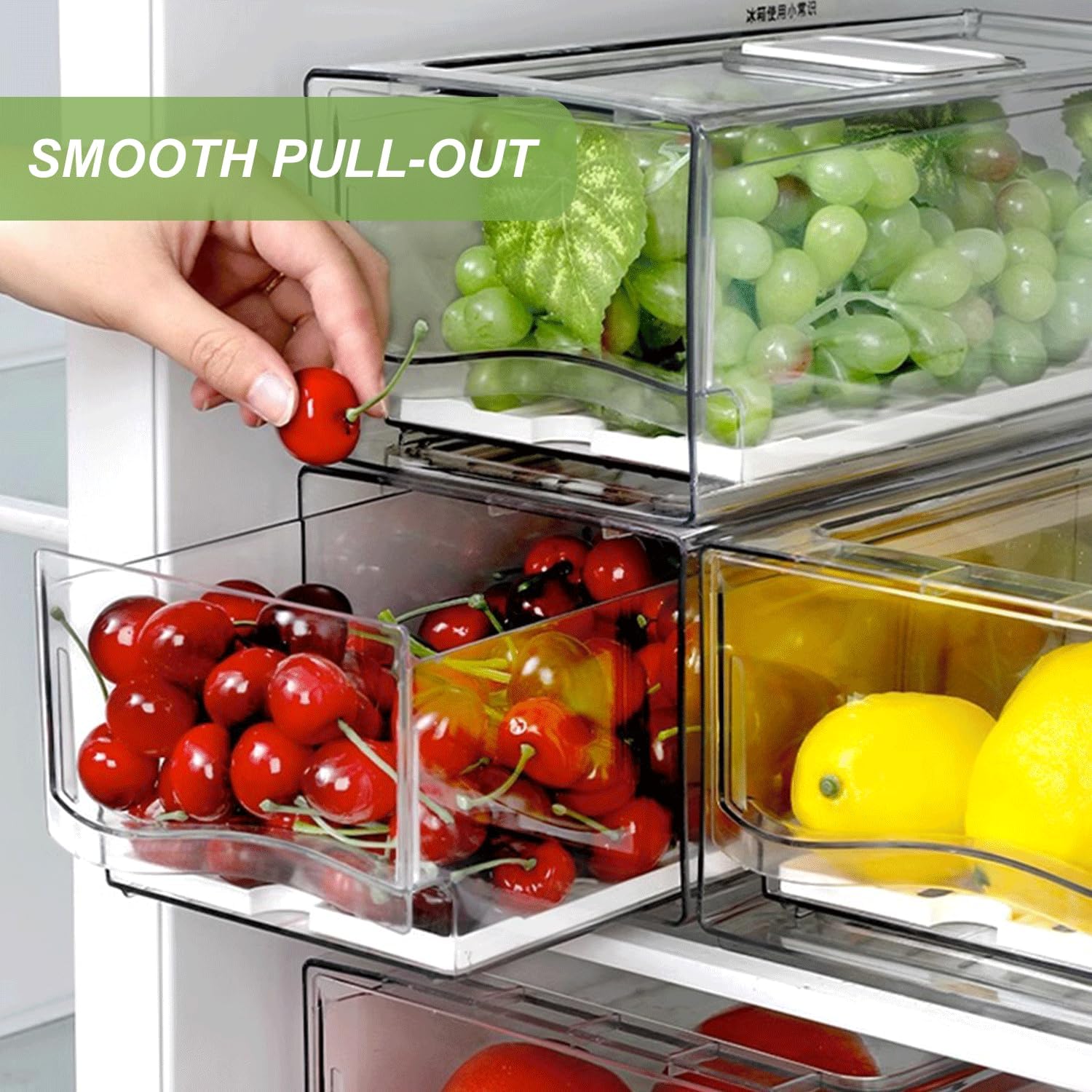


To extend the freshness of vegetables in the fridge, store them in perforated plastic bags and placed in the fridge crisper. High-humidity vegetables like leafy greens can benefit from a slightly damp paper towel in the bag to maintain moisture by adsorbing excess moisture.
Proper airflow is essential, so avoid cramming to much into the drawer.
2. Humidity Considerations
It’s important to note that not all produce should be refrigerated however, some fruits, such as apples, berries, and citrus fruits, can be stored in the refrigerator to prolong their shelf life.
On the other hand, other vegetables, including tomatoes, cucumbers, and potatoes, are best kept at room temperature.
When refrigerating fruits or vegetables, it is essential to store them in the appropriate compartments. Most refrigerators have designated crisper drawers with adjustable humidity settings oy you can purchase additional drawers to met your needs.
Fruits tend to thrive in low humidity, so set the drawer to a low humidity level to prevent moisture accumulation. Vegetables, on the other hand, benefit from higher humidity, so adjust the drawer accordingly. Additionally, remember to remove any damaged or overripe produce from the refrigerator promptly to prevent the spread of spoilage.
Avoid washing your fruits before storing them. High humidity accelerates spoilage. Instead, give them a gentle rinse right before consumption.



Group similar vegetables together to create micro-climates with consistent humidity needs. Be cautious with ethylene-producing vegetables like tomatoes, as they can affect other veggies and fruits.
Unripe fruits can be placed at room temperature to mature, and once they ripen, you can transfer them to the fridge crisper or drawer.
3. How to Manage Ethylene Gas to Keep Fruits and Vegetables Fresh longer?
Ethylene is a naturally occurring gas released by fruits and some vegetables during the ripening. While it is essential for the ripening process, high levels of ethylene can accelerate spoilage.
To prevent premature ripening and extend the shelf life of ethylene-sensitive fresh produce, such as leafy veggies, fresh herbs, broccoli, and cucumbers, it is advisable to store them separately from ethylene-producing fruits, such as bananas and apples.



To minimize ethylene exposure, consider using breathable storage bags or containers that allow for air circulation. This prevents the buildup of ethylene gas around the produce, helping to keep fruits and veggies fresh longer.
Additionally, if you have ripe fruits for which, you want to slow down ripening, you can store them in a paper bag which contain ethylene and delay ripening.
4. How Humidity Affects Freshness of Fruits and Vegetables?
Maintaining proper humidity levels is crucial to prevent moisture loss or excessive dampness, both of which can lead to decay. Some fruits, such as berries, prefer higher humidity, while vegetables like carrots and peppers require lower humidity.
Utilizing the humidity controls on your refrigerator’s crisper drawers or produce storage containers, or perforated plastic bags can help regulate moisture levels and preserve freshness.
For high-humidity produce, such as berries, place them in containers with relatively tight lids or cover them with perforated plastic bags to retain moisture. This prevents them from drying out.
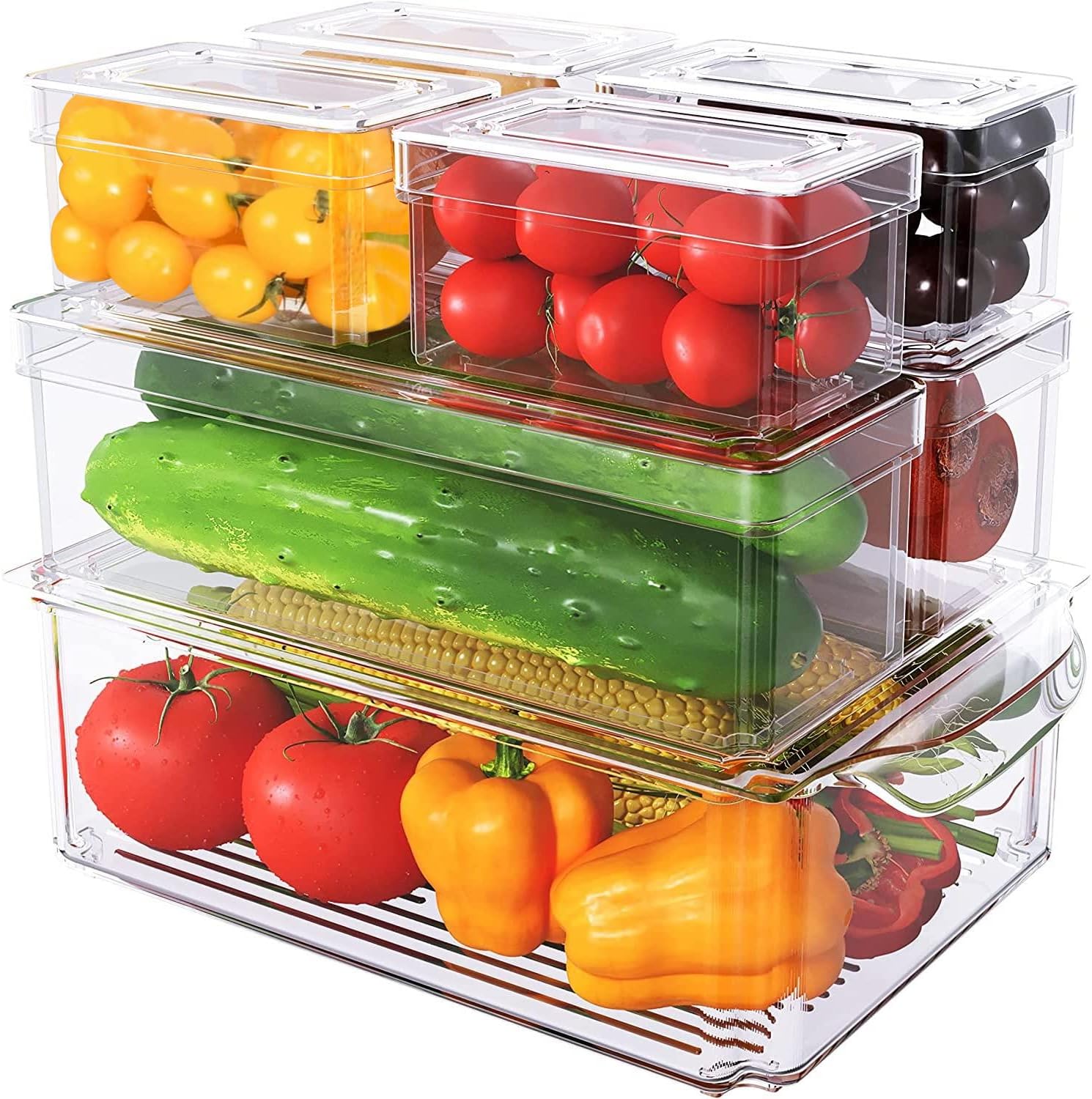

On the other hand, low-humidity produce, such as iceberg lettuce and herbs, should be stored properly in breathable bags, containers with adjustable vents, or wrap herbs loosely in damp paper towels to enable them to absorb moisture and prevent wilting.
Carrots can be refrigerated but if that isn’t feasible, keep it in a cool, dark area. You can employ a box or container filled with sand or damp sawdust to retain moisture.
In general no fruits or vegetables should be left sitting in moisture accumulated within a container as this precipitates spoilage. The ideal humidity must be what is provided or set by the storage container or required by the specific produce.
5. How Does Air Circulation Affect Fruit and Vegetable Freshness?
Proper air movement is vital for preventing the buildup of extra moisture and ethylene gas, which can hasten the deterioration of some fruits and vegetables.
Therefore, avoid overcrowding your refrigerator or storage containers, as it restricts air flow. For optimal freshness, place fruits or vegetables in a single layer or use ventilated storage containers that promote airflow.


When storing produce ensure fruits are not tightly packed with the vegetables in the refrigerator. Leave space between each item to allow for adequate air flow.
Similarly, when using storage containers, choose those with ventilation features or use perforated bags to maintain airflow. This helps prevent the accumulation of moisture and allows gases, like ethylene, to dissipate.
6. How and When to Wash Fruits and Vegetables?
While it is essential to wash fruits and vegetables before consumption, excessive moisture can accelerate spoilage. To strike a balance, wash produce right before use, rather than immediately after purchase. Additionally, thoroughly dry them using a clean cloth or dry paper towel before storage, as dampness encourages bacterial growth and decay.
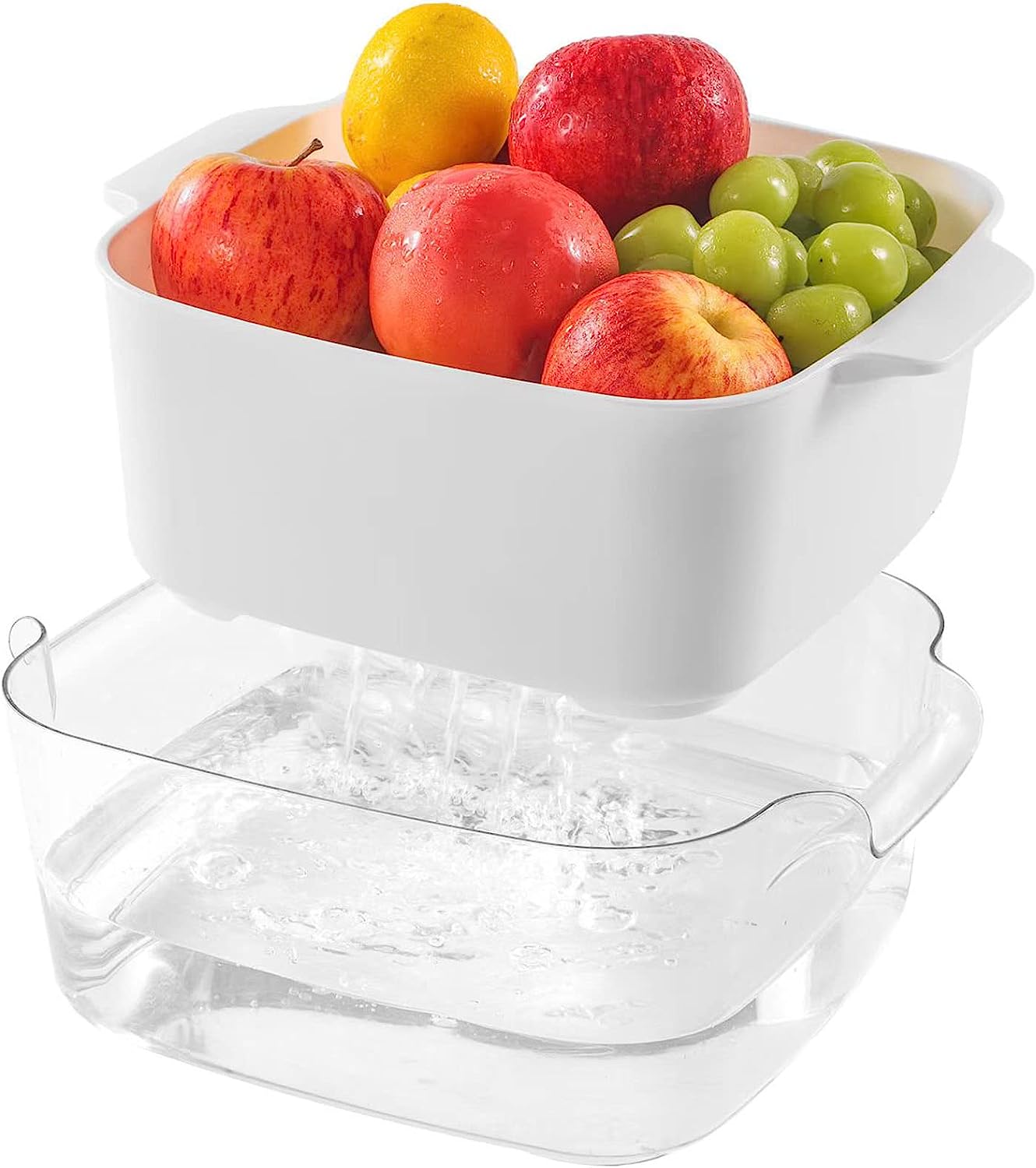


Before storing, remove any visible dirt or debris from the produce. For leafy veggies, separate the leaves, wash them gently under cold running water, and pat them dry.
For fruits, such as grapes, rinse under water and dry them thoroughly. Avoid washing delicate berries until just before eating to prevent them from becoming mushy.
7. How to Package Fruits and Vegetables?
Packaging plays a crucial role in preserving the freshness of fruits and also vegetables. For delicate produce such as berries and greens, opt for breathable containers or perforated bags to maintain airflow while reducing moisture loss.
Sturdy, airtight containers are suitable for storing chopped or sliced fruits or vegetables, as they minimize exposure to air, preventing browning and loss of texture.
When selecting packaging materials, choose those specifically designed for storing fruits and vegetables. Zip top bags, perforated plastic bags or breathable produce bags are ideal for items that require airflow, such as mushrooms or leafy greens.
Alternatively, you can use containers with ventilation features or puncture holes in regular plastic bags to allow for adequate airflow.
8. Which Fruits and Vegetables to Store Together or Separately?
Certain fruits / vegetables release natural gases, such as ethylene, that can impact nearby produce. To prevent cross-contamination and preserve freshness, store fruits separately from vegetables. Keep onions, garlic, and potatoes in a cool, dark place away from other produce, as they emit gases and causes them to spoil faster.
Additionally, some fruits and vegetables have distinct odor profiles that can be absorbed by other produce. Keep strong-smelling items, such as onions, garlic, or durian, in a separate compartment or container to prevent flavor transfer.
This helps maintain the quality and taste of other stored produce.
9. How to Prepare Fruits and Veggies For Storage?
Preparing fruits or vegetables for storage can significantly impact their freshness. Remove any damaged or spoiled pieces to prevent the spread of decay.
For leafy greens, trim the stems and store them in a container with a small amount of water. Similarly, remove the tops from root vegetables like carrots and beets to prevent moisture loss.

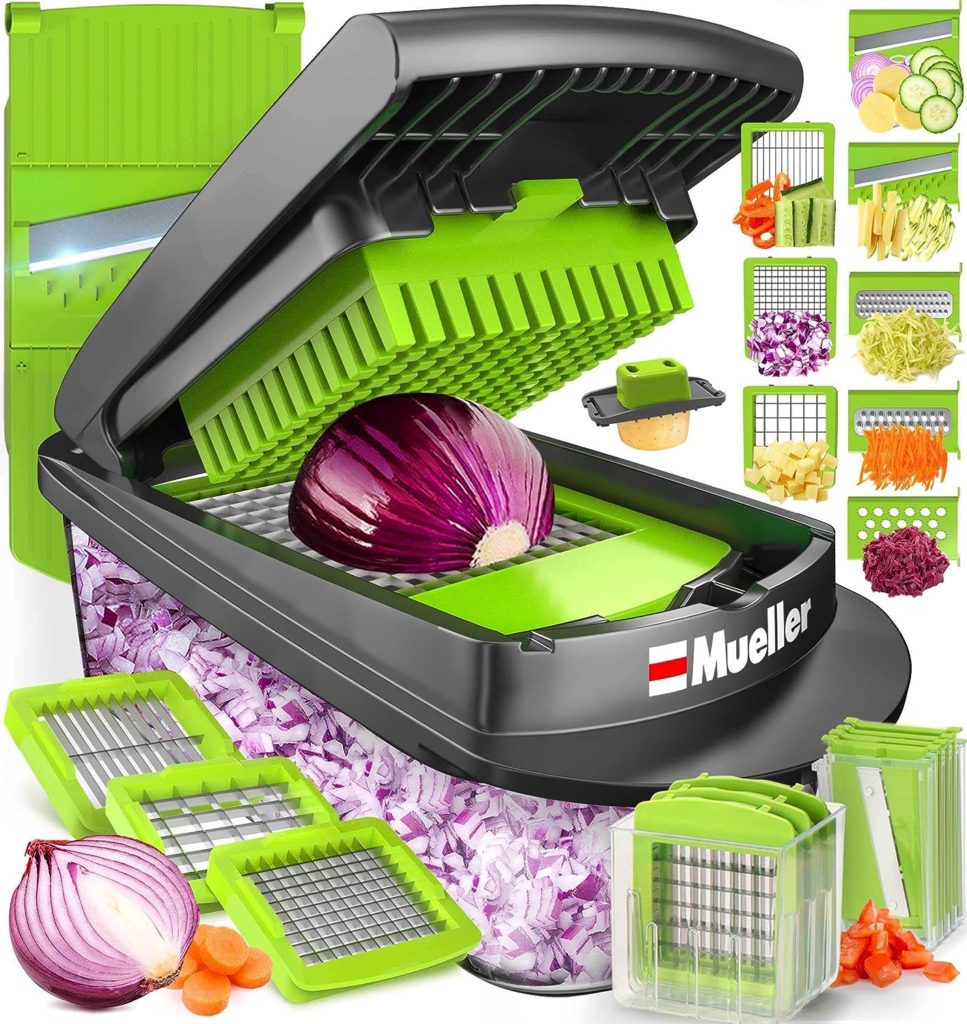

Other fruits such as pears, or avocados tend to brown out when exposed to air, consider using a natural acid solution, such as lemon juice or ascorbic acid, to prevent discoloration. Simply toss the cut fruits in the solution before storing.
Additionally, when storing cut fruits and veggies, cover them with plastic wrap or place them in airtight containers to minimize exposure to air, which can cause texture changes and loss of moisture. For best results use a fruit and vegetable blade chopper or food slicer.



10. How to Freeze Fruits and Vegetables for Long-Term Storage?
Freezing is an excellent method to preserve the freshness of fruits and veggies for an extended period. Proper freezing techniques can help retain their nutritional value, flavor, and texture.



Before freezing, blanching certain vegetables, such as broccoli or peas, helps retain their color and nutritional content. For fruits, such as berries or bananas, freeze them in single layers on a baking sheet before transferring them to an airtight plastic bag, airtight container, freezer bags or freezer safe containers to prevent clumping.
When using frozen fruits and veggies, thaw them in the refrigerator overnight or use them directly in cooked dishes. Avoid refreezing thawed produce, as it can lead to textural changes and nutrient loss. Additionally, label and date the containers to ensure proper rotation and utilization.
11. How to keep Vegetables Fresh in the Fridge?
To keep veggies fresh in the fridge, store them in the crisper drawer. Use perforated plastic bags to control humidity and reduce moisture buildup. Group similar items together and use perforated plastic bags or plastic wrap to maintain humidity levels.
The perforations help maintain the right balance of moisture and airflow. Additionally, grouping vegetables with similar humidity needs together can further optimize their freshness.
Regularly inspect the contents of the crisper drawer and remove any vegetables showing signs of spoilage.
Fruits and Vegetables Storage Without a Refrigerator
1. How to keep Fruits and Vegetables Fresh Longer Without a Fridge?
If refrigeration is not an option, you can still keep fruits and produce fresh by storing them in a cool, dark location with proper ventilation. There are various ways to store produce outside a refrigerator.
These include: Hanging baskets for tomatoes, bananas, peppers. Pantries or cabinets for onions, garlic and potatoes. Dry storage for garlic, onions, and winter squash hanged in mesh bags or laid on shelving. Sand and peat storage for root vegetables like carrots and beets.
Water storage for celery, asparagus and herbs. Clay pot storage for live indoor herbs and other leafy plants. Root cellars to store fruits, vegetables, potatoes, onions, carrots, and apples.
Separate ethylene-producing fruits from others to prevent premature ripening. Keep the refrigerator clean to prevent cross-contamination and regularly assess the freshness of your stored items.
To learn about more strategies for fruits and vegetables please click the image or the green bar below.
2. What Fruits and Vegetables Should not be Refrigerated?
Certain fruits like tomatoes, bananas, potatoes, avocados, citrus fruits, melons, and pineapples, onions, garlic, and some citrus should not be refrigerated due to the impact of cold temperatures on their taste and texture.
Refrigeration can significantly impact the taste and quality of these items. For instance, tomatoes stored in cold temperatures can become mealy and lose their natural juiciness, while avocados may suffer from improper ripening and develop a mushy consistency.
The same holds true for potatoes, which, when subjected to chilly environments, undergo a conversion of starches into sugars, altering their taste. Additionally, onions and garlic stored in refrigerators may become susceptible to softening and mold growth due to heightened humidity levels.
Winter squash varieties, including pumpkins and butternut squash, experience a decline in texture and flavor when exposed to cold conditions, thus affecting their culinary versatility.
To ensure the optimum taste and texture of these vegetables, it’s advisable to house them in a cool, well-ventilated space. Moreover, keeping them separate from ethylene-producing fruits like bananas is crucial, as this prevents undesirable premature ripening and spoilage.
Citrus fruits might lose their juiciness and become less flavorful when chilled. Melons and pineapples can experience altered ripening processes, resulting in less sweet and less enjoyable fruit.
By adhering to these storage recommendations, you can confidently preserve the delectable quality of these vegetables, enhancing the overall gastronomic experience in your kitchen.
Refrigeration can lead to issues such as premature darkening of banana peels and undesirable changes in avocado texture.
To preserve their optimal flavor and texture, it’s best to store these fruits at room temperature in a cool, dry area away from direct sunlight. If you prefer to eat it fruits chilled, place it in the refrigerator a couple of hours prior to serving.
How to Store and Preserve Fruits
1. How to Store Fresh Lemons?
For short-term storage, keep fresh lemons at room temperature in a fruit bowl or basket. If you plan to store them for a longer period, place them in the refrigerator’s temperature controlled drawers. To prevent moisture loss and maintain flavor, consider placing them in plastic wrap, a perforated plastic bag or airtight container.
This helps retain their juiciness while preventing drying out. Lemons are sensitive to strong odors, so avoid storing near foods with pungent smells.
Alternatively, it can be stored in open containers to allow proper air movement.
2. How to Preserve Lemon?
Preserving whole lemons without having to cut them as first wash them to remove any dirt or impurities. Dry them thoroughly to prevent moisture from interfering with the preservation process.
Next, carefully pierce each lemon multiple times using a fork or toothpick. This step allows the lemons to absorb the preserving ingredients. Place the lemons in a glass jar and cover them generously with coarse salt. The salt acts as a natural preservative, drawing out moisture and preventing spoilage.
Seal the jar tightly and store it in a cool, dark place for a few weeks. Over time, the lemons will soften, and their flavors will deepen and mellow. When ready to use, simply rinse the preserved lemons to remove excess salt before use
3. What is the Best Way to Store Berries?
First, place the unwashed in the refrigerator’s crisper drawer. This cool and humid environment helps maintain their freshness.
Avoid overcrowding the container, as berries are fragile and can bruise easily. To prevent moisture buildup, which can lead to mold growth, consider storing them on a paper towel-lined tray or in a breathable container to prevent moisture buildup.
It’s essential not to wash your berries until you’re ready to eat them. Washing before storage can introduce moisture and decrease their edible life. Pat them dry with a paper towel to ensure they’re free of excessive moisture before storing.
Regular inspection is key to ensure berries stay fresh. Check for any signs of spoilage, such as mold, soft spots, or off odors, and promptly remove any compromised berries.
Before consuming, rinse the berries gently under cold water and pat them dry with a paper towel. Consume them within a few days of purchase for optimal taste and quality.
4. How to Store Apples?
For short-term indulgence, store apples at room temperature in a fruit bowl which will also add rustic charm to your space. But for extended freshness store them to the refrigerator crisper drawer.
Remember, that apples are ethylene producers, so keep them away from ethylene-sensitive items like leafy greens.
To prevent browning, apply a touch of lemon juice on cut apples before sealing them in an airtight container. These simple tricks preserve both taste and appearance.
Whether you favor the Honeycrisp’s crunch or the Granny Smith’s tartness, these storage insights apply universally. Apples stored right will be ready for snacking, baking, or turning into cider. Elevate your apple experience and savor their succulent flavor for longer.
5. How to Store Fresh Peaches?
Allow fresh peaches to ripen at room temperature. Once ripe, you can refrigerate them to prolong their freshness to slow down ripening. Store them in the crisper, either in a plastic bag or on a paper towel-lined tray and away from strong-smelling foods. Using plastic wrap or a container to secure the paper towel is sometimes useful.
If the peaches are slightly underripe, you can accelerate ripening by placing them in a paper bag at room temperature. To experience the full flavor, allow refrigerated peaches to come to room temperature before consuming.
Avoid placing them in direct sunlight or near heat sources.
6. How to Store Tomatoes?
Green unripe tomatoes are preferably store at room temperature: Tomatoes are best stored at room temperature until they ripen fully. Placing them on a sunny windowsill can accelerate the ripening process.
Avoid refrigeration as cold temperatures can alter the texture and taste of tomatoes. Once fully ripe move them to the refrigerator for a short period prior to use. Store tomatoes with their stem side facing downward.
This helps prevent air from entering through the stem scar, which can lead to faster spoilage.
If your tomatoes come with the vine attached, leave it on until you’re ready to use them. The vine helps maintain freshness and flavor.
Keep away from ethylene producers like bananas, and avocados. Ethylene can speed up the ripening process and cause tomatoes to spoil more quickly.
Don’t over stack, store on a single layer on a plate or tray layered with paper towel to absorb excessive leftover moisture. Inspect regularly for signs of ripeness and any soft spots and discard damaged or overripe ones.
Storage Containers For Fruits and Vegetables
1. Do you wash Fruits before storing in Mason Jars?
Before storing fruits in mason jars, it’s advisable to wash and thoroughly dry them. High humidity can contribute to mold formation, so make sure the fruit is completely dry. Employ clean, dry mason jars and seal them tightly to avert moisture infiltration.
If the fruit isn’t washed before storing it in a mason jar, the bacteria will spread, and the fruit won’t last very long.
To avoid having fresh fruit go bad inside a mason jar, it’s essential to wash and dry it properly before storage. The article also suggests using distilled vinegar to rid the fruit of germs and bacteria that cause it to go rotten.
It is also essential to ensure that the Mason jar is vacuumed sealed with a Mason Jar Sealer to ensure an air-tight environment to preserve the fruit or vegetable. This vacuum creates an absence of oxygen which delays spoilage caused by oxidation. This extend the shelf life of the fruits or vegetable while also preserving its flavors and nutrients.



2. Should Vegetables be kept in Plastic Bags?
Unleash the potential of plastic bags to revolutionize your veggie storage. The plastic bag debate might have left you questioning, but here’s the truth: when used wisely, they can be a game-changer.
Perforated plastic bags create an environment that controls humidity, a crucial factor in preserving veggies. These bags allow airflow, preventing moisture buildup that leads to spoilage. Leafy greens, cucumbers, and peppers thrive with this method.
But moderation is key. While plastic bags offer benefits, excessive use can trap moisture. For optimal results, keep the bags slightly open for proper air flow.
Not all veggies are alike. Onions and potatoes prefer a dry, dark, ventilated spot. But for those prone to wilting or mold, like spinach and mushrooms, perforated plastic bags shine.
Embrace the plastic bag strategy for your veggies – it not only extends freshness but also curbs food waste and saves money. It’s a convenient and effective method that enhances your culinary game and reduces your carbon footprint. Your veggies deserve the best, and plastic bags deliver.
3. What are the Best Refrigerator Storage For Produce?
When it comes to maintaining the quality and flavor of your produce, the right container can make all the difference. Using breathable containers or baskets to prevent moisture buildup, which can lead to spoilage can provide a way to ensure that ethylene-producing fruits are stored separately.
For vegetables, opt for dedicated vegetable containers designed to regulate humidity and maintain optimal crispness. These storage containers are equipped with vents that allow excess moisture to escape, preventing vegetables from becoming soggy. Look for containers specifically labeled for vegetable storage to ensure you’re getting the best results.


When it comes to fruits, invest in high-quality fruit storage containers. These are designed to provide proper airflow while protecting delicate fruits from getting crushed. Look for containers with adjustable dividers to accommodate different types of fruits and prevent cross-contamination.
4. what are Fridge organizer bins?
Fridge organizer bins are another essential tool for keeping your refrigerator tidy and organized. These bins come in various sizes and shapes, allowing you to separate different types of produce and create a designated space for each item. This not only prevents overcrowding but also makes it easier to find what you need, reducing food waste.


When choosing refrigerator storage containers, consider materials like BPA-free plastic or glass. Transparent containers allow you to see the contents without opening them, which helps minimize exposure to air and moisture.
To be effective, these containers must have tight-sealing lids that create an airtight environment, preserving the freshness of your fruits and veggies. Additionally, containers with stackable designs optimize space and help you make the most of your refrigerator’s capacity.


The best containers to store vegetables in the fridge, fridge organizer bins, fruit storage containers, and refrigerator organizers are those that prioritize freshness, proper airflow, and organization. By investing in a quality air tight container, you’ll extend the life of your produce, reduce waste, and ensure that your fruits and veggies stay fresh, delicious and nutritious for longer.
5. How to ensure Produce don’t Spoil
Lastly, regularly inspecting your fruits and veggies and practicing the principle of first in, first out (FIFO) can help prevent spoilage and ensure the freshest produce is consumed.
Check for any signs of spoilage, such as mold, discoloration, or soft spots, and promptly remove any affected items. By using the oldest produce first and organizing your storage spaces accordingly, you can minimize waste and maximize freshness.
This is the best approach to consume produce to enhance and keep produce fresh.
To learn more about other strategies for keeping fruits and veggies fresh please see our recent blog post by clicking the green bar below.
Summing Up
Keeping fruits and veggies fresh requires attention to proper storage, handling, and preparation techniques. We hope these FAQs have provided helpful insights into proper refrigeration; understanding ethylene management, the role of humidity and what you can do to counter or work with each of these.
Remember that each type of fruit or vegetable may have specific storage requirements, so it is essential to consult individual guidelines when in doubt. With these practices in place, you can enjoy the nutritional benefits and flavorful delights of fresh fruits and veggies for longer periods, enhancing your overall well-being and culinary experiences.
Features Related Blog Post












